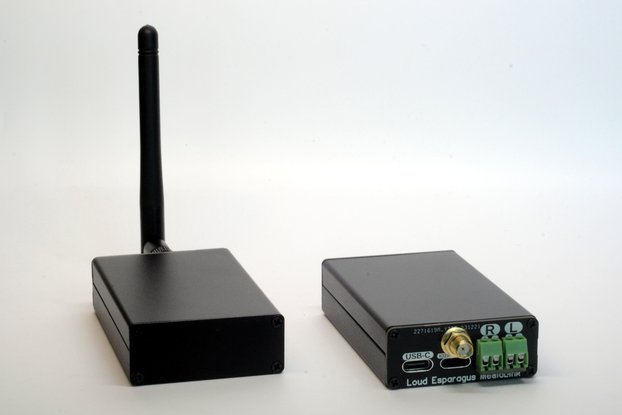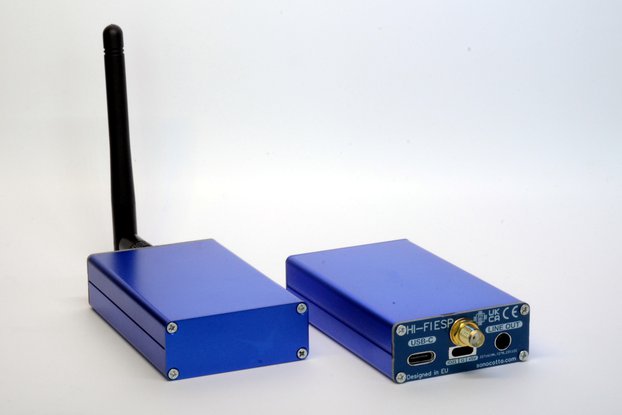Home Media Center powered by Orange Pi and MAX98357A DAC
Designed by Sonocotta in Poland
Buy with confidence.
Our Tindie Guarantee protects your purchase from fraud. Learn More
What is it? The Orange Pi Home Media Center is a compact and neatly designed hardware project that combines the power of the Orange Pi One board and the Hi-Fi audio capabilities of the dual MAX98357A…
Read More…The Orange Pi Home Media Center is a compact and neatly designed hardware project that combines the power of the Orange Pi One board and the Hi-Fi audio capabilities of the dual MAX98357A DAC. This versatile media center provides a customizable and fully open-source hardware platform for home entertainment.
With a minimalistic but functional design inspired by commercial audio gear, it offers a seamless user experience. It aimed to support Volumio, Mopidy, or any custom firmware you may come up with.
I did a few audio projects in the past, some using ESP32, some using popular Raspberry Pi devices. Each has its pros and cons, and with each iteration, I'm trying to focus on the details that were working best for me, while using them myself on a daily basis.
What is special about the Orange Pi is the amount of hardware power that you get for your buck. Surely, the ecosystem is not as rich as Raspberry Pi, and the community is not so vast. But Armbian is still a Debian-based system and most of the things you'd want to run, just work!
Loud Orange Pi uses a dual MAX98357 HiFi DAC with a built-in highly efficient D-class amp to deliver 3 to 5W of music power directly to your speakers. It's capable and reasonably priced, and great value for money. In terms of audio quality, it is no compromise, and that is what matters most.
| HiFi Orange Pi Media Center | Loud Orange Pi Media Center (this device) | Louder Orange Pi Media Center (work in progress) | |
|---|---|---|---|
| Image | WIP | ||
| DAC | PCM5100A 32bit Stereo DAC | Dual I2S DAC MAX98357 with built-in D-Class amp | Stereo I2S DAC TAS5805M with built-in D-Class amp |
| Output | 2.1 VRMS Line level output / -100 dB typical noise level | 2x 3W (8Ω); 2x 5W (4Ω) | 2x 22W (8Ω, 1% THD+N); 2x 32W (4Ω, 1% THD+N) |
| IR reader | yes | yes | yes |
| RGB LED | yes | yes | yes |
| External relay driver | yes | no | yes |
| Ethernet | built-in | built-in | built-in |
| Powers from | 5V USB-C power adapter / Triple LP5907 3.3 V Ultra-Low-Noise LDO | 25W+ USB-C PD power adapter | 65W USB-C PD power adapter (25W/45W with limited power) |
| Mechanical dimensions (WxHxD) | 88mm x 38mm x 100mm | 88mm x 38mm x 100mm | 88mm x 38mm x 100mm |
| I2S CLK | I2S DATA | I2S WS | CE | |
|---|---|---|---|---|
| Orange Pi One | PA19 | PA20 | PA18 | PA8 |
| WS2812 RGB LED | RELAY EN | IR INPUT | |
|---|---|---|---|
| Orange Pi One | PA7 | PA2 | PA9 |
| SPI CLK | SPI MOSI | SPI MISO | TFT CS | TFT DC | TFT RES | TFT LED | |
|---|---|---|---|---|---|---|---|
| Orange Pi One | PC2 | PC0 | PC1 | PC3 | PA0 | PA1 | PA3 |
| A | B | BTN | |
|---|---|---|---|
| Orange Pi One | PC7 | PC4 | PA6 |
Being a Debian-based Orange Pi Media Center is a vast space for experimentation. First things first, for any OS you need to configure DAC. The below instruction is based on Armbian experience, that supports the current kernel (thus already having DAC kernel modules).
The linked Github repository provides detailed instructions on how to configure and test DAC in a few bash commands.
Ansible is an automation suite that allows you to configure systems remotely using redistributable configurations called playbooks.
A few playbooks were created to allow 2-clicks deployment for Hi-Fi Orange Pi. The same can be done manually by pulling necessary packages from the vast Debian software store.
| Front | Back | PCB |
|---|---|---|
Please visit the hardware section of the project repo for board schematics and PCB designs. Note that PCBs are shared as multi-layer PDFs as well as Gerber archives.
According to manufacturer Orange Pi One requires at least 2 Amps of 5V line, and each DAC needs at least 1 Amp extra. With the total budget requirement of 5 Amps, it is not reasonable to count on a USB-C 5V power line alone. I've decided to use a USB-PD over a type-C cable. Pretty much any 9V/12V/20V PD-enabled power adapter will work, most typically phone chargers with a quick charge option. The smallest of the family is 25W models, which is plenty enough for both Orange Pi and DACs.
No country selected, please select your country to see shipping options.
No rates are available for shipping to .
Enter your email address if you'd like to be notified when Loud Orange Pi Media Center can be shipped to you:
Thanks! We'll let you know when the seller adds shipping rates for your country.
| Shipping Rate | Tracked | Ships From | First Item | Additional Items |
|---|---|---|---|---|
|
:
|
Most of the packages are sent the next business day in the morning CET time. Delivery time varies wildly, but typically it is 1-2 weeks within EU and 3-4 weeks outside EU due to delays in customs. If the package does not show up after 8 weeks, please reach out for a replacement or refund.
Buy with confidence.
Our Tindie Guarantee protects your purchase from fraud. Learn More

$21.00
Free Shipping!

$21.00
Free Shipping!

$16.00
Free Shipping!

$69.00
Free Shipping!

$24.00
Free Shipping!

$45.00
Free Shipping!

$21.00
Free Shipping!

$45.00
Free Shipping!
By clicking Register, you confirm that you accept our Terms & Conditions
We recognize our top users by making them a Tindarian. Tindarians have access to secret & unreleased features.
We look for the most active & best members of the Tindie community, and invite them to join. There isn't a selection process or form to fill out. The only way to become a Tindarian is by being a nice & active member of the Tindie community!
